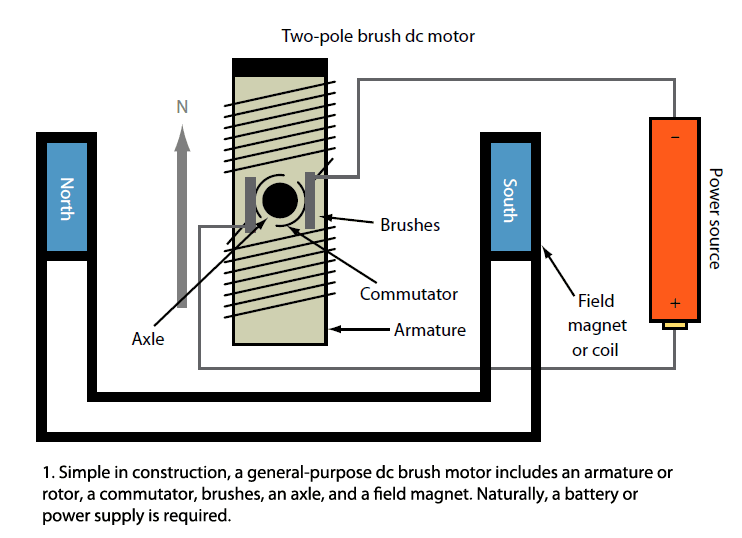The First Motors
Principles of Operation
An electric motor is a device that uses electricity to create mechanical force. Operation is based on simple electromagnetism. As seen with ordinary magnets, opposite (North and South) polarities attract. A DC (direct current) motor is designed to harness the magnetic interaction between a current-carrying conductor and an external magnetic field to generate rotational motion.
If the direction of the current is reversed, the direction of rotation also reverses. When magnetic field and electric field interact they produce a mechanical force, and based on that the working principle of DC motor was established. The direction of the rotation of a motor is given by Fleming's hand rule, which states that if the index finger, middle finger and thumb of your left hand are extended mutually perpendicular to each other and if the index finger represents the direction of magnetic field, middle finger represents the direction of the current, then the thumb represents the direction in which force is experienced by the shaft of the DC motor. This can be used to find the direction of the magnetic field, current, or force if two of them are known.
Important People
The basic principle of electro magnetic induction were discovered in the early 1800's and by 1820, it had been discovered that an electric current produces a magnetic field. In the following years, we successfully invented a simple DC motor. The invention involved the work of many men, so proper credit for the invention varies depending on how you choose the word 'motor.'
Michael Faraday (UK)
Michael Faraday demonstrated the conversion of electrical energy into motion. For this Faraday is often credited with the invention of the first electric motor, however, his motor is merely a lab demonstration and cannot be harnessed for useful work.
Joseph Henry (US)
By 1831, Joseph Henry had built a simple device that he considered to be a 'philosophical toy.' Despite it being more useful than Faraday's motor and being the first real use of electromagnets in a motor, it was still deemed an experiment. Nevertheless it was still considered important in the evolution and invention of motors.
William Sturgeon (UK)
One year after Henry, William Sturgeon invented the commutator, which involved the first rotary electric motor. His motor, while simple, was the first to provide continuous rotary motion and contain essentially all of the elements in a modern DC motor.
Thomas Davenport (US)
Thomas Davenport invented the first direct current electric motor in North America in 1834. However, his model involved a high battery power cost which lead to Davenport's bankruptcy.








No comments:
Post a Comment